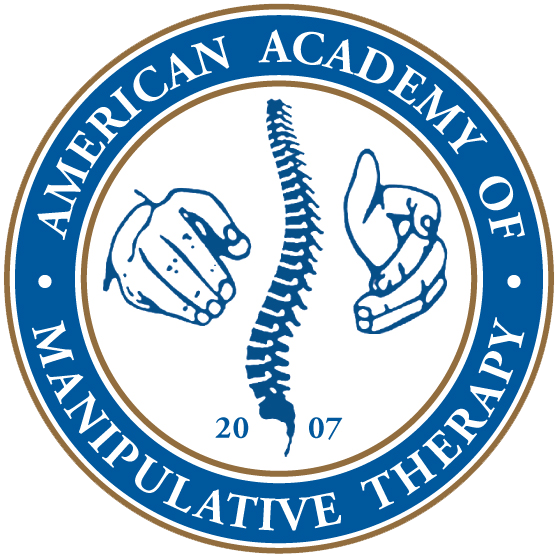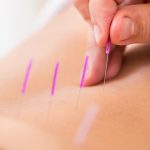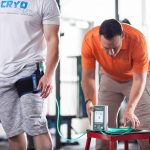DPT to Osteopractor: Thirty Years of Clinical Practice & Professional Development in Physical Therapy
In 1978, the APTA and the American Board of Physical Therapy Specialties unveiled the idea of board certifications for various specialties within physical therapy. The first board certification offered was the Orthopedic Clinical Specialist (OCS) back in 1989. During this time period, physical therapists were rapidly transitioning from hospital settings to physical therapist owned outpatient orthopaedic clinics. In addition, by 1988, the battle for direct access by physical therapists was well in gear, as some form of direct access was legally permitted in 20 states, and the entry-level physical therapy degree was transitioning from a Bachelor’s to a Master‘s degree.1-3
Thirty years ago, and as a brand new graduate, I was excited to begin work as a physical therapist. Moreover, I landed two dream jobs! In my first job, I worked in a clinic located within a health club that doubled as the Chicago Bulls training center. During my second job, I worked as the strength and conditioning coach for the Chicago Blackhawks. Working in such high-profile facilities, I was fortunate to have provided care for professional athletes affiliated with the Chicago Bears and Chicago Cubs, along with several Olympians. Although this appeared to be a strong start to a career in physical therapy, something was missing. It soon became evident that with only an entry-level Bachelor of Science degree, I did not have the skills to achieve extraordinary clinical outcomes; therefore, I made the decision to pursue additional education. In 1988, I became a Certified Strength and Conditioning Specialist (CSCS) and completed a number of continuing education courses to develop my clinical reasoning and hands-on, manual therapy skills.
In 1989, I relocated to Menlo Park, California where I worked as the team physical therapist for the newly formed San Jose Sharks. During this time, I attended various continuing education weekend classes in hands-on, soft-tissue techniques, joint mobilization and therapeutic exercise approaches with the hope of improving my clinical outcomes. I specifically focused on a biomechanical, osteopathic approach of rehabilitation, completing as many classes as possible on various positional dysfunctions and corrective muscle energy techniques. I also finished all the Institute of Physical Art’s course work, taking most classes twice. However, even with my new skills, some of my patients, especially the athletes, often supplemented the care I provided with chiropractic and acupuncture treatments.
A few years later, I relocated to North Carolina and opened a private practice. In 1999, the American Physical Therapy Association accredited the first entry-level DPT programs, and physical therapy began to quickly transition (to the surprise of many) from the Master’s degree to an entry-level Doctor of Physical Therapy degree—i.e. a doctoring profession.(3). Wanting to stay current, I began work on a Master ‘s Degree followed by a transitional DPT, which I accomplished in 2004.
Despite countless continuing education classes and years of didactic academic course work, I was still frustrated and growing increasingly tired of providing the same, standard interventions. I consistently went “above and beyond” for my patients, but many of them still reported augmenting their physical therapy sessions with alternative care. I even made an effort to learn high-velocity, low-amplitude (HVLA) thrust manipulations from a PT / chiropractor, but the techniques seemed forceful and uncomfortable. In other post-graduate continuting education programs, spinal manipulation was treated as a technique only for the elite few and offered only after paying your dues by completing a series of more basic, non-thrust mobilization courses. Even after completing all the prerequisite nonthrust mobilization courses, the decision to perform spinal manipulation, particularly in the upper cervical region, supposedly required so many vascular and non-vascular screening tests—that ironically have since been found to not possess the diagnostic accuracy or inter-examiner reliability that many had claimed for two decades—that I used the techniques very rarely. Fed up and frustrated, I took several classes through The College of Osteopathy at Michigan State and even considered returning to school to become an Osteopath!
In 2009, I studied for and passed the OCS exam but became even more disheartened, as the certification did little to improve my clinical outcomes since it is just a multiple choice written test given on one afternoon that cost $2100 all in all. Fortunately, at about the same time, a colleague suggested the Spinal Manipulation Institute course series offered by Dr. James Dunning. I completed the first course (SMT-1) in 2009. Amazingly, Dr. Dunning taught his students to manipulate the spine as a first-line treatment following reasonable, comprehensive and evidence-based screening. Moreover, the momentum-induced manipulation techniques designed to manufacture a barrier by moving the facet joints simultaneously through multiple physiologic and accessory planes in mid-range required minimal range of motion, low forces and felt very comfortable. My outcomes began to immediately and dramatically improve; in short, I was hooked.
I continued on to complete the first exclusively HVLA Thrust Manipulation course series (on the planet!) offered to physical therapists or medical doctors through Spinal Manipulation Institute and became Certified in Spinal Manipulative Therapy (Cert. SMT) in 2010. In addition, I also learned dry needling through the Dry Needling Institute of the American Academy of Manipulative Therapy (AAMT), earning the credential Cert. DN in 2014. I went on to complete the Diploma in Osteopractic in 2015 and earned Fellowship status (i.e. the credential FAAOMPT) after graduating from the 12-month, APTA-accredited AAMT Fellowship in Orthopaedic Manual Physical Therapy in 2016. With a solid foundation in patient evaluation and differential diagnosis, I was now able to combine the more traditional nonthrust manual therapy techniques, modalities and therapeutic exercise with spinal manipulation, extremity manipulation, tool-assisted manual therapy, dry needling, etc. to achieve the patient outcomes I had desired for almost 3 decades.4-18
I recently had several colleagues ask me about the Diploma in Osteopractic and the AAMT Fellowship program. Since 2010, my practice has paid for continuing education to help nine therapists to earn Certification in Dry Needling (Cert. DN), six to attain Certification in Spinal Manipulative Therapy (Cert. SMT), and four to achieve the prestigious Diploma in Osteopractic. Thanks to AAMT, Dr. Ray Butts and Dr. James Dunning, at 53 years of age, earning the FAAOMPT credential was finally a realistic and meaningful goal. Most importantly, our patients are benefiting, and as a result, my practice continues to grow.
I am also often asked about Dunning as an individual. Let’s be honest – there are a number of people in our profession with big opinions about the man. A larger than life personality, he has certainly facilitated tremendous change within the PT profession in such a short amount of time. In addition, many in the PT profession do not know that Dr. Dunning, with little recognition or support, has battled fiercely to protect physical therapists’ right to perform dry needling and spinal manipulation. In 2012, and after a 4-year lawsuit brought on by the Alabama State Board of Chiropractic, the Supreme Court of Alabama ruled 9-0 in favor of Dr. Dunning—that is, spinal manipulation could be performed by physical therapists and was not the exclusive domain of chiropractors. Notably, Dr. Dunning is the second physical therapist in the United States to be sued and taken to a state supreme court based on his practice of spinal manipulation; however, unlike Michael Teston in Arkansas, Dunning prevailed. Dunning also prevailed in the Trademark Trials and Appeals Board court system following a 22-month campaign brought on by the American Osteopathic Association. Most recently, Dunning prevailed in Nevada, after yet another 3-year lawsuit, wherein the Supreme Court found the State Board of Physical Therapy had violated the Administrative Code of Nevada by engaging in illegal rule making.
Dunning has created a world-class organization for advancing the art and science of both spinal manipulation and dry needling. The American Academy of Manipulative Therapy, Dry Needling Institute and Spinal Manipulation Institute provide outstanding educational programs. In my opinion, during my thirty-year career, James Dunning and AAMT have done more to develop my skills, improve my practice and advance my professional career than anyone.
AUTHOR:
Dr. Don Miller, DPT, MSPT, BSPT, OCS, Cert. SMT, Cert. DN, Dip. Osteopractic, FAAOMPT
Graduate, AAMT Fellowship in Orthopaedic Manual Physical Therapy
Owner & Osteopractic Physical Therapist, Cleveland Physical Therapy Associates
Shelby & Kings Mountain, Cleveland County, NC
REFERENCES:
- American Board of Physical Therapy Specialist. American Physical Therapy Association. https://www.abpta.org. Accessed February 1, 2017.
- Ries E. The State(s) of Direct Access; All across the nation, consumers have “some form” of direct access to physical therapist services. What does that mean? What work remains? PT in Motion. October 2016.
- Plack M. The Evolution of the Doctorate of Physical Therapy: Moving beyond the controversy. American Physical Therapy Association. https://www.apta.org/Pdfs/governance/hodminjun00.pdf. Accessed February 1, 2017.
- Butts R, Dunning J. Peripheral and spinal mechanisms of pain and dry Needling Mediated Analgesia: A clinical resource guide for health care professionals. International Journal of Physical Medicine & Rehabilitation. 2016;04(02).
- Manheimer E, Cheng K, Linde K, Loa L, Yoo J, Wieland S. Acupuncture for peripheral joint osteoarthritis. Cochrane Database Syst Rev. 2010;(1) (CD001977).
- Kwon YD, Pittler MH, Ernst E. Acupuncture for peripheral joint osteoarthritis: A systematic review and meta-analysis. Rheumatology. 2006;45(11):1331–1337.
- Ezzo J, Berman B, Hadhazy V, Jadad A, Lao L, Singh B. Ezzo et al.: Is acupuncture effective for the treatment of chronic pain? A systematic review, PAIN 86 (2000) 217–225. Pain. 2001;93(2):199–200.
- Ezzo J, Hadhazy V, Birch S, et al. Acupuncture for osteoarthritis of the knee: A systematic review. Arthritis & Rheumatism. 2001;44(4):819–825.
- Dunning J, Butts R, Mourad F, Young I, Flannagan S, Perreault T. Dry needling: A literature review with implications for clinical practice guidelines1. Physical Therapy Reviews. 2014;19(4):252–265.
- Zhang W, Nuki G, Moskowitz RW, et al. OARSI recommendations for the management of hip and knee osteoarthritis: part III: Changes in evidence following systematic update of research published through January 2009. Osteoarthritis and Cartilage. 2010;18(4):476–499.
- Corbett MS, Rice SJC, Madurasinghe V, et al. Acupuncture and other physical treatments for the relief of pain due to osteoarthritis of the knee: Network meta-analysis. Osteoarthritis and Cartilage. 2013;21(9):1290–1298.
- Vickers AJ, Linde K. Acupuncture for chronic pain. JAMA. 2014;311(9):955.
- Dunning JR, Cleland JA, Waldrop MA, et al. Upper cervical and upper Thoracic thrust manipulation versus Nonthrust mobilization in patients with mechanical neck pain: A Multicenter Randomized clinical trial. Journal of Orthopaedic & Sports Physical Therapy. 2012;42(1):5–18.
- Bronfort G, Assendelft W, Evans R, Haas M, Bouter L. Efficacy of spinal manipulation for chronic headache: A systematic review. Journal of Manipulative and Physiological Therapeutics. 2001;24(7):457–466. doi:10.1016/s0161-4754(01)99423-0.
- Ernst E. A systematic review of systematic reviews of spinal manipulation. Journal of the Royal Society of Medicine. 2006;99(4):192–196. doi:10.1258/jrsm.99.4.192.
- Assendelft W. Spinal manipulative therapy for low back pain. Annals of Internal Medicine. 2003;138(11):871. doi:10.7326/0003-4819-138-11-200306030-00008.
- Gross AR, Hoving JL, Haines TA, et al. A Cochrane review of manipulation and mobilization for mechanical neck disorders. Spine. 2004;29(14):1541–1548.
- Bontfort G. Efficacy of spinal manipulation and mobilization for low back pain and neck pain: A systematic review and best evidence synthesis*1. The Spine Journal. 2004;4(3):335–356.








